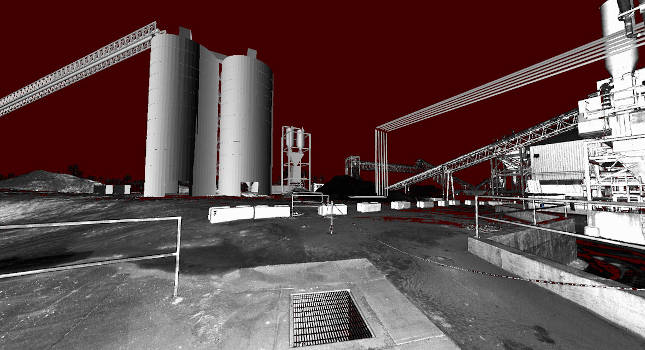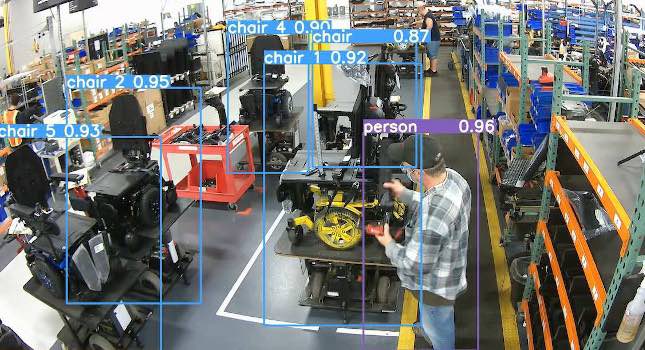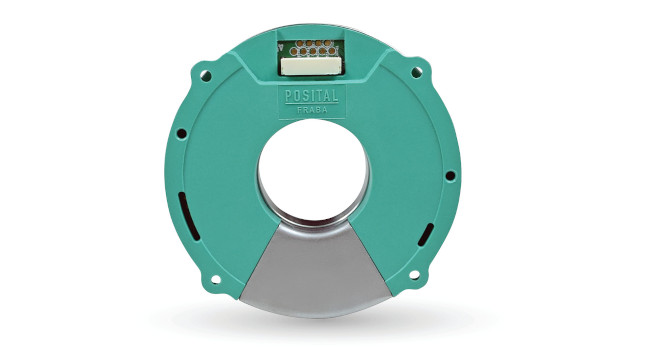In this era of the mandatory data trail, it's a stern fact of life that almost everything involved in routine plant operations - from product quality to equipment efficiency to the safety and serviceability of environmental controls - must be consistently monitored. More importantly, the drive toward reliability-centered maintenance coupled with inevitable staff reductions throughout the plant ...
In this era of the mandatory data trail, it’s a stern fact of life that almost everything involved in routine plant operations – from product quality to equipment efficiency to the safety and serviceability of environmental controls – must be consistently monitored. More importantly, the drive toward reliability-centered maintenance coupled with inevitable staff reductions throughout the plant has necessitated more efficient tools to better manage today’s Lean Maintenance programs. The increased demands for consistent quality and responsible traceability of results have created the need for portable, accurate and cost-effective off-line data acquisition in virtually all plant domains.
There are always those central machines, processes and energies whose every push, pull and ampere must be measured, pre-analyzed, recorded, post-analyzed and exhaustively reported. There also are many other operations, including periodic performance audits and environmental monitoring, for which repetitive “online” data acquisition strategies are costly overkill. Such operations have to do not so much with testing the actual production process and its results, but with vital maintenance and troubleshooting of the machinery and conditions that directly support it.
Here’s where a portable data collector comes into play. Using a general-purpose, high-speed portable data collector to handle only short-term test and measurement needs means not having to dedicate a more elaborate installation or extend an existing computer-controlled network to do the job. It also means that a technician can be deployed to collect data for follow-up PC analysis by a more senior engineer at a later time.
Portable data collector capabilities
A good portable data collector is more than a pretty voltmeter; it’s a data acquisition instrument. If this portable instrument is equipped with a live touch screen graphic display and annunciation, it can allow the operator to size up the entire test or process at a glance and troubleshoot as required on the spot. At the same time, it can sample and store scaled measurement data, either automatically (at a regular time interval) or by exception on detection of any specified trigger event, including a limit violation or digital input. Internal cross-channel math calculations can be set up to display and monitor additional process variables such as horsepower, efficiency and corrected flow – plus signal max/min and average values.
An adaptable portable data collector can acquire and digitize a wide range of physical or electrical measurement signals found on the plant floor – from low-level thermocouple (millivolt) signals to preconditioned and amplified 0-10-Vdc industrial signals (for pressure, displacement, torque, load, flow and speed) to industry-standard 4-20-mA signals from process instrumentation to high-level (120-240 Vac) power inputs wired to compressors, pumps and motors. It can also accept the on/off logic signals for relay and contact closures that are controlled by industrial PLC and sequencing devices, as well as pulse inputs from quadrature encoders, pickups and other frequency-generating devices.
Finished data can be both viewed in real time and offloaded to a PC for subsequent processing, display and analysis. Important selection criteria for a portable data collector instrument include the number and type of required analog/digital channels; sampling frequency (the rate at which analog signals are acquired and converted to digital values); and the accuracy and precision (resolution) of finished measurement readings.
Scope and limitations
It’s important to recognize the proper scope of the portable data collector and its basic limitations. It is by no means intended to replace a SCADA or process control system involving direct PC/PLC control, or the kind of relatively fixed external data acquisition chassis installation found on the production line or in test cells. The portable data collector is by its very nature a complementary tool, used for both forensic and preventive work, alongside a larger built-in system.
Normally battery-powered, it isn’t capable of supplying excitation to connected transducers. And being a hand-held device with a small footprint, it can accommodate only a fixed number of inputs. The portable data collector is neither a data processor nor a data transmitter. Communications functions are usually (and intentionally) kept to a minimum, because data records are logged to a standard CF memory card in a simple and universally compatible ASCII text format.
Remember that the portable data collector is designed to fulfill a twofold task. By continuously furnishing reliable finished real-time measurements, it enables the operator to immediately evaluate the measured process and, if necessary, make any required adjustments. By also recording such measurements using any of a number of useful logging modes – including the taking of data values that existed just prior to a triggering event – it makes them easily available for later processing, trend analysis and report generation.
Portable data collector applications
Maintenance and troubleshooting is a primary application. This includes not only routine preventive or emergency equipment service, but also monitoring the daily or intermittent performance of plant systems for energy, heating and cooling, exhaust, material handling and so on. Fault recording (event monitoring of problematic machine or process parameters for detailed post-analysis) is an important aspect of troubleshooting, as is trend analysis for off-line SPC/SQC. A service technician can, for example, quickly set up the unit with appropriate parameters and trigger limits to perform the high-speed sampling necessary to detect a subtle timing or signal amplitude fault.
A portable data collector can also prove its worth in periodic process tuning operations, such as checking vibration, calibration, setpoints, process flow, servo/control-loop timing and actuation, machine settings and benchmarking. The basic portability of the portable data collector is of great advantage in many remote-site testing and field service applications, including hard-to-reach locations and even onboard vehicle performance logging.
For example, energy surveys in motors, appliances and HVAC equipment are a natural for the portable data collector, because electrical consumption can be easily measured and compared to performance standards. In the case of benchmarking or troubleshooting an installed compressor/refrigeration system, the portable data collector can readily monitor the input power ac signals and, using its limit-sensitive triggers, detect and capture adverse voltage sags or swells. At the same time, it can perform temperature profiling of the system, thereby monitoring its control parameters and cooling efficiencies. Because of the speed of acquisition and minimal latency among input parameters, the portable data collector can handle other critical parameters such as compressor vibration, refrigerant pressure and open/closed switch status. It can then plot recovery profiles for predictive maintenance and improved system control.
In a nutshell
The portable data collector makes possible significant instrumentation consolidation and simplification because a single modular multiple-sensor device with visual feedback can now effectively replace a whole collection of meters, indicators, recorders and cable sets. It offers the obvious convenience of easy conveyance, interconnection, setup and use. Data accessibility results from the use of removable memory cards and a simple text format that permits direct importation of data by third-party programs without the need for special drivers or version-dependent operating systems. Its flexibility of graphical data presentation – which typically includes multiple live readouts, status spreadsheets, bar graphs, trend charts, scope traces and DFT analysis – along with its ability to calculate additional performance variables optimizes the operator’s interpretation of results and, thus, the dependability of any subsequent control actions.
As the urgency for overall plant data acquisition intensifies, the mobile off-line unit moves into place. The portable data collector is increasingly recognized as a reliable low-cost data acquisition instrument. The expanding role of simple-to-use portable instrumentation on the outskirts of plant operations rightly counterbalances the implementation of ever more complex centralized computer-directed systems for long-term data acquisition and control.
The Bottom Line…
-
A portable data collector can handle short-term test and measurement without cluttering an existing network.
-
An adaptable portable data collector can acquire and digitize a wide range of measurement signals found on the plant floor.
-
Maintenance and troubleshooting is a primary application.
-
The block diagram shows typical functions and internal flow of a “shared RAM” portable data collector with full data synchronization and a sophisticated user interface. In this case, up to four external input “pods” allow fast and easy hookup of machine or process-dedicated sensors.
Author Information Matt Vagedes is general manager of Dayton, OH-based Daytronic Corp. Power plant to upgrade equipment
American Electric Power will upgrade its digital turbine control systems at the Cook Nuclear Plant. Multiple products from Invensys Process Systems will work together in a fast-track implementation for main turbine and feed water pump turbine controls project.
Invensys Process Systems will supply AEP with Triconex electronic control systems for its main turbines and feed water pump turbines on both units at the Cook Nuclear Plant in Bridgman, MI. Software from SimSci-Esscor will simulate the Triconex digital controllers and will be added to Cook’s existing plant simulator. Invensys will also supply Wonderware InTouch human machine interface (HMI) software and IndustrialSQL Server plant historian, as well as start-up and training services to support the Invensys products. Mechanical interfaces and installation will be supplied by others.
Datastream expands presence in Russia
Datastream Systems, Inc. expanded its market presence to include Russia and the Commonwealth of Independent States (CIS) through local offices in Moscow and St. Petersburg. Serving the growing demand for asset performance management, Datastream formed partnerships with several leading integrators for services and support in Russia and the CIS that will serve as the company’s sales channel into these markets. Local resources will manage product localization and marketing, as well as training and integrator certification across the region. To date, Datastream has more than 30 customers in Russia, including Gazprom, Total and Avon.
“Having a local, Russian language asset management solution with local support is a significant milestone,” said Alex Kondratuk, head of the Russian integration and distribution operations known as Datastream Solutions CIS. “This will generate new opportunities for asset management in Russia and the CIS countries. The Datastream 7i solution is an internationally recognized product with robust functionality that will provide an outstanding platform for our expansion efforts.”
“The Russia/CIS region is home to mature oil and gas, aluminum and energy production operations, as well as large and growing transportation and government sectors,” said Datastream CEO Larry Blackwell.
ABB Automation World 2006 returns to Houston
ABB Automation World Users Conference and Exhibition will be May 9-12, 2006 at the Hilton Americas in Houston. The event attracted more than 1,700 attendees in 2005. Attendees will have the opportunity to participate in user and ABB-presented technical sessions that discuss practical applications of existing and new technologies.
ABB’s largest Americas region customer event is designed for automation users in engineering, mill, plant and general management, in a number of industries such as Chemical, Oil & Gas, Consumer & Pharmaceutical, Metals, Mining and Minerals, Pulp & Paper, Utilities and others. Attendees participate in informative technical sessions presented by their peers and ABB technical experts, share problem-solving approaches and visit the event’s hands-on exhibit. Further information will be available at



